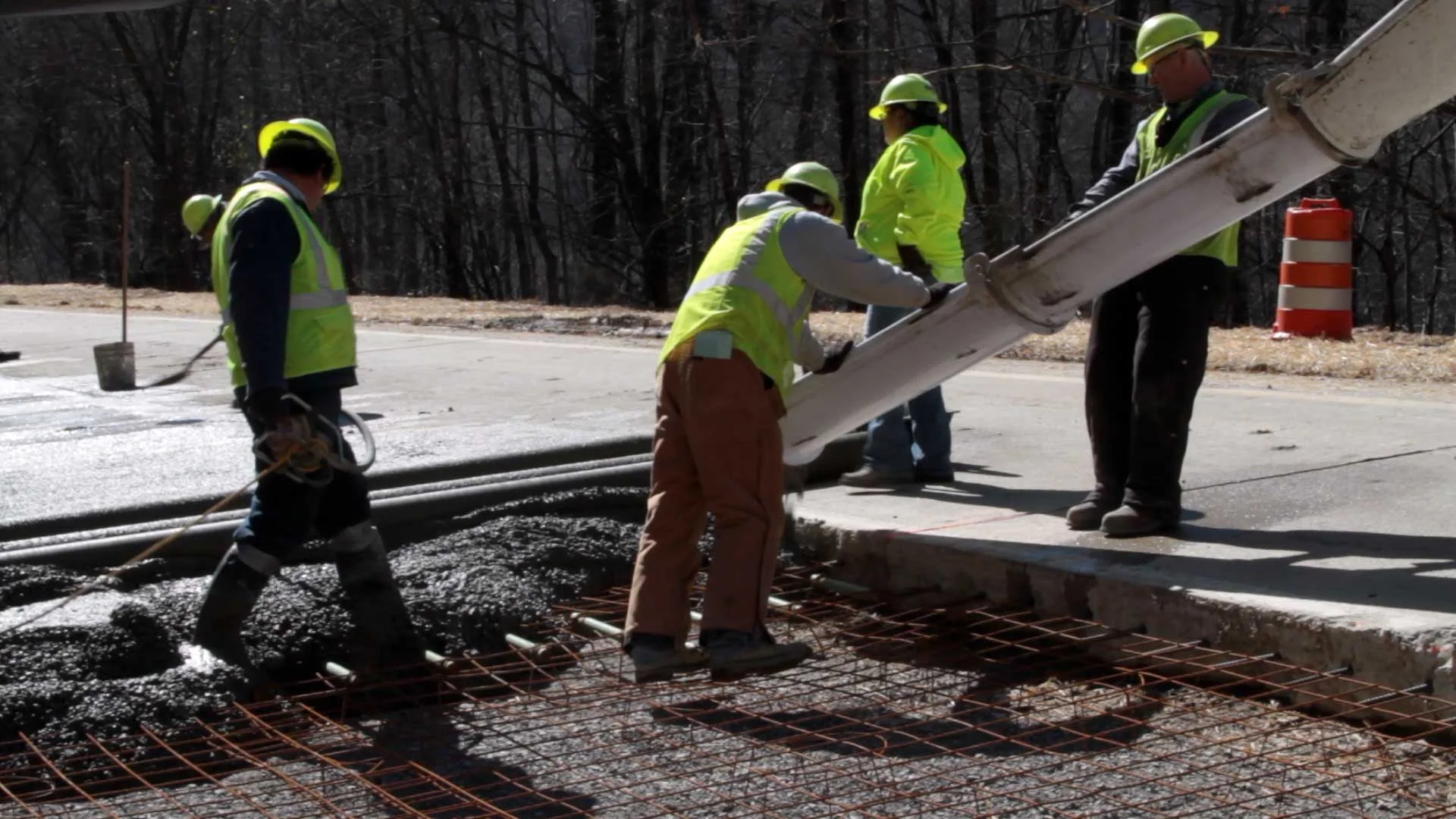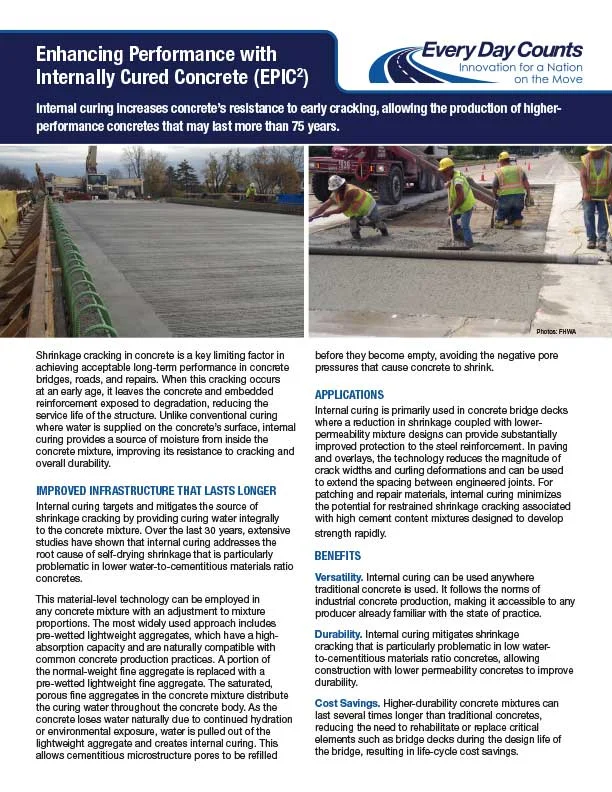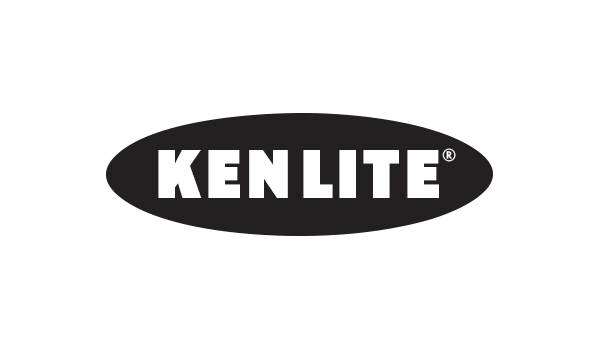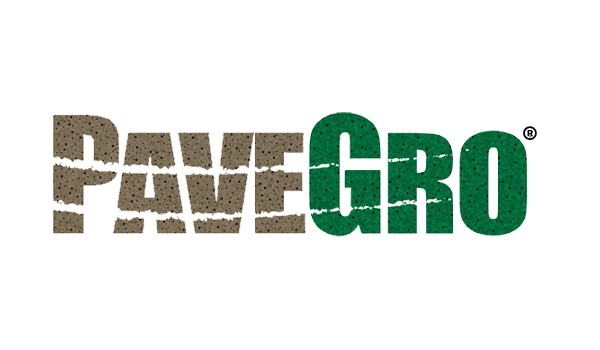Internal Curing Gains Ground in Highway Construction: A Durable Solution
Internal Curing Gains Ground in Highway Construction: A Durable Solution
Internal curing is being recognized as a significant advancement in concrete technology. Today, the integration of lightweight aggregate (LWA) into concrete offers enhanced performance by reducing cracking, improving durability, and extending the service life of critical infrastructure. From bridge decks to highway pavements, this innovative technique is delivering longer-lasting solutions with lower maintenance costs.
Internal curing is accomplished by incorporating pre-wetted lightweight aggregates (LWA) into a concrete mixture. Pores in the LWA function as reservoirs that readily release water as needed for hydration or to replace moisture lost through evaporation or self-desiccation. By maximizing cement hydration throughout the interior of concrete, internal curing can contribute to increased strength while reducing autogenous stresses and strains.
Concrete pavements often face challenges such as shrinkage, cracking, and curling, which can severely affect their durability and service life. As moisture evaporates from the surface during the curing process, shrinkage stresses develop, leading to cracks that allow water and deicing salts to penetrate. This can cause corrosion of steel reinforcement and eventually shorten the pavement’s lifespan.
Pioneering research from experts like Dr. Jeffery R. Roesler and successful field applications by agencies such as the Illinois Tollway demonstrate the growing adoption of internal curing across the nation. As transportation authorities increasingly incorporate this method into their projects, internal curing is poised to become a standard practice in modern concrete construction.
Research Insights from Dr. Jeffery R. Roesler
Dr. Jeffery R. Roesler, a professor of Civil and Environmental Engineering at the University of Illinois Urbana-Champaign, has been at the forefront of internal curing research. He first became involved with internal curing technology during his studies of the challenges faced by concrete pavements in coastal and dry climates, where slab curling and cracking are prominent issues.
“Our tests have shown that internal curing can reduce slab curling by as much as 50% in laboratory conditions,” says Dr. Roesler. “With more uniform moisture throughout the concrete, there is less cracking and less stress at the surface, resulting in a smoother, more durable pavement.”
Field Applications and Practical Benefits
Encouraged by these laboratory findings, the Illinois Tollway Authority conducted field tests to examine the benefits of internal curing on continuously reinforced concrete (CRC) pavements. These tests, overseen by Steve Gillen, then Deputy Program Manager for Materials, involved the use of a 10.5-inch CRC pavement incorporating internally cured concrete.
According to Gillen, the thinner slab depth, along with the use of a cement-treated base, led to cost savings in materials, particularly steel, without compromising pavement performance.
Today, Steve Gillen serves as Engineering Manager, Transportation at Horner & Shifrin in St. Louis, Missouri, and brings his 27 years of experience at the Illinois Tollway to new projects.
Growing Adoption Across Transportation Authorities
Since the early adoption of internal curing, its application has expanded across various state departments of transportation (DOTs) and municipalities. Agencies such as New York, Indiana, Louisiana, North Carolina, Ohio, and Utah DOTs have successfully implemented internal curing in bridge decks, while Kansas and Texas DOTs, as well as the North Texas Tollway Authority, have used it in pavement projects. Additionally, cities like West Lafayette, Indiana, and municipalities in Michigan have embraced internal curing for pavement patches and repairs.
This growing list of applications highlights the versatility and effectiveness of internal curing for improving the performance of concrete infrastructure across a variety of climates and conditions.
A Look to the Future
Research into the long-term benefits of internal curing is ongoing, with agencies continuing to monitor field test sections for cracking, warping, and overall pavement durability. As more data becomes available, researchers and transportation authorities are refining their design methods to further optimize the use of internally cured concrete.
Jason Weiss, professor and head of the Civil and Structural Engineering School at Oregon State University, points out that internal curing is transitioning from research to mainstream use:
Concrete producers and contractors are also finding that the adjustments required for internal curing—such as pre-wetting lightweight aggregate and modifying mix designs—are relatively straightforward. As internal curing specifications become more standardized, it is expected to become a common feature in large-scale infrastructure projects.
Conclusion: A Durable, Cost-Effective Solution
The adoption of internal curing marks a significant step forward in the quest for more durable and cost-effective concrete pavements. By reducing shrinkage and slab curling, internal curing extends the lifespan of pavements while also offering smoother, safer rides for motorists. As research continues and field data is collected, internal curing is poised to become a cornerstone technology in the design of modern concrete infrastructure.
As Dr. Weiss notes, “[Internal curing] means people can install infrastructure elements that should provide longer-lasting and improved service. You reduce maintenance costs, but you also reduce inconvenience for the traveling public so the social costs go down. In most instances, it’s a more sustainable option because you’re not replacing things so often and using as much repair material.”
Additional Case Studies

TVA Utilizes Internal Curing for Historic Hydroelectric Dam’s Bridge Deck
The Wilson Dam bridge deck, part of the iconic 100-year-old hydroelectric dam on the Tennessee River in Muscle Shoals, Alabama, is ready handle another century of traffic. Arcosa Lightweight’s material played a pivotal role in these extensive repair…
Read More
A Look Back at the Union Pacific Dallas Intermodal Terminal (DIT)
The Union Pacific Dallas Intermodal Terminal (DIT) project stands as a testament to the transformative benefits of lightweight aggregate in improving the durability, strength, and overall performance of concrete paving. Notably, it remains one of th…
Read More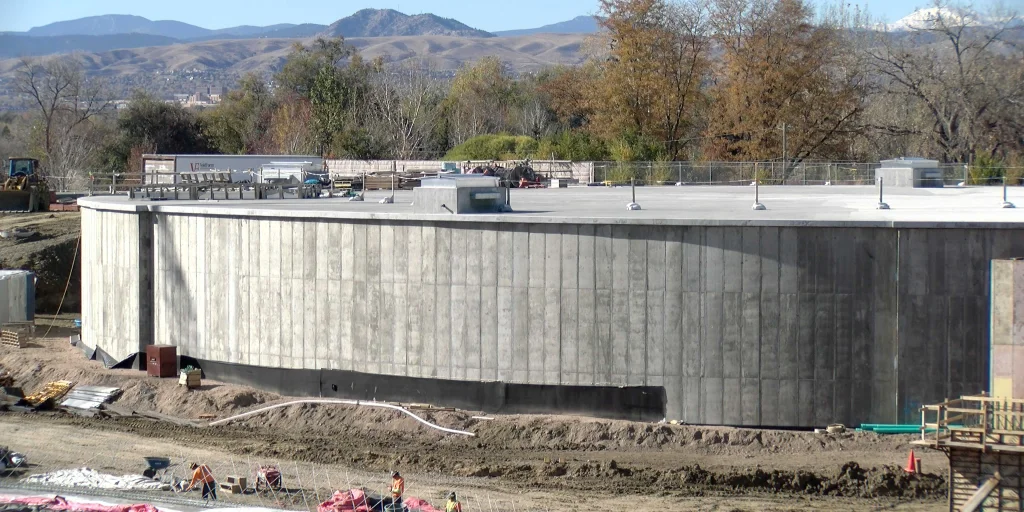
Internally Cured Concrete Enhances Water Tank Durability in Denver Water Projects
Denver Water is committed to ensuring safe and reliable water for its customers. To achieve this, the utility continually upgrades its system by replacing aging, large-capacity water storage tanks with more durable designs that are less susceptible…
Read More






